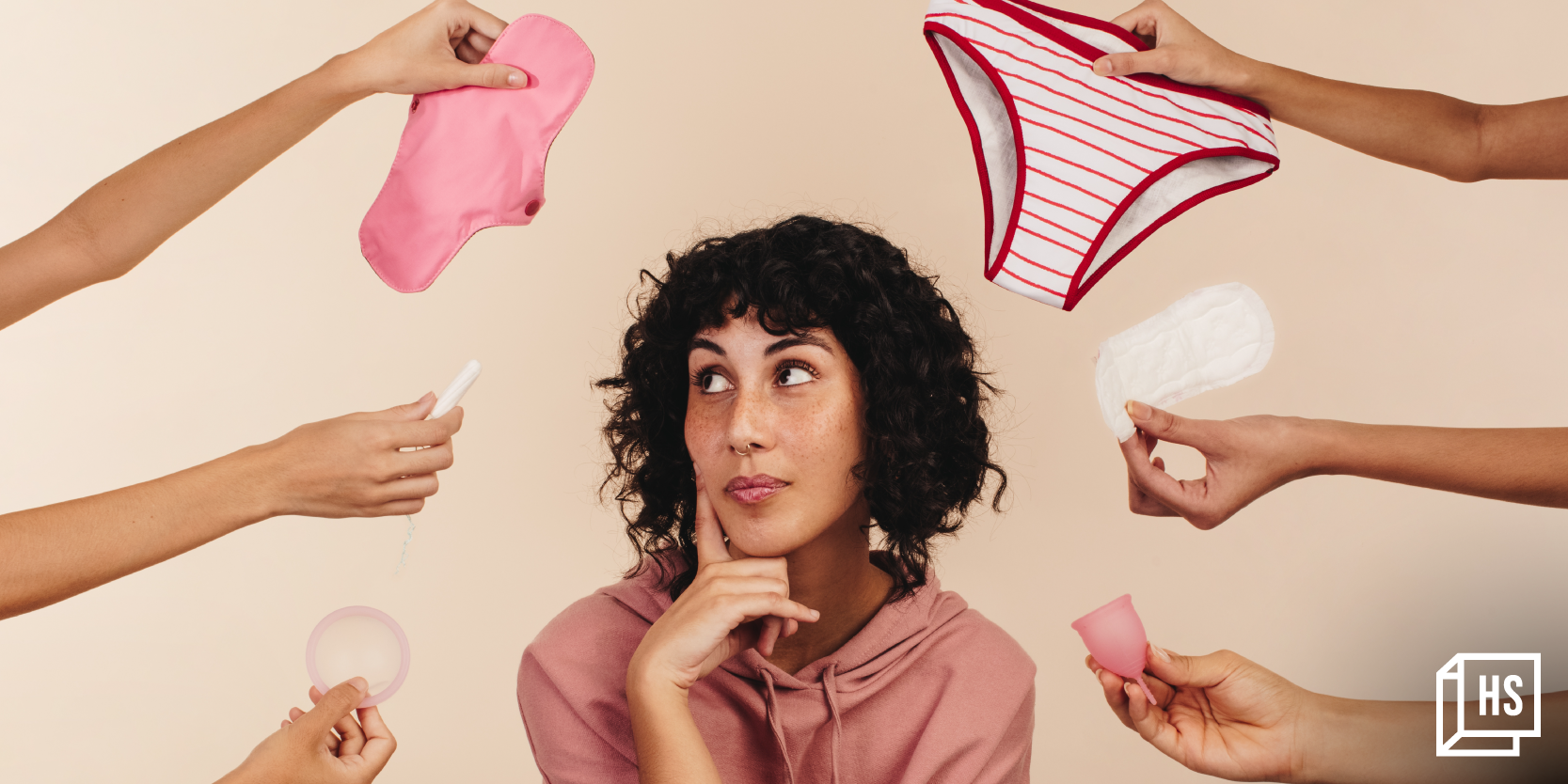Helping women help the environment: how sustainable menstruation is the way forward
Multiple social enterprises are generating livelihood and income opportunities in the menstrual hygiene space by engaging and empowering local women self-help groups and NGOs in the manufacturing process.
Sonal Raj

Sunday May 28, 2023 , 5 min Read
While the global discourse regarding menstrual hygiene is gaining momentum, it is crucial to direct attention towards sustainable menstruation as a vital component of health, environmental and climate resilience. In India, where an estimated 360 million individuals experience menstruation, sustainable menstruation is a topic of utmost significance.
Sustainable menstruation entails using menstrual products that are environmentally safe and reusable, generate minimal waste and reduce harm to the environment. Conversely, the conventional use of single-use, inorganic sanitary napkins – presently the gold standard in India – has led to several environmental and health-related concerns.
In India alone, over 12 billion sanitary pads are disposed of every year, contributing to 113,000 tonnes of solid waste. This plastic-containing, bio-hazardous waste can take over 500 years to decompose, ultimately finding its way into landfills and, subsequently, being managed by exposed waste workers or disposed of through incinerators that emit toxic pollutants such as dioxins and furans.
In 2018, the New Delhi-based NGO, Toxics Links, conducted a study that uncovered the presence of toxic chemicals and volatile organic compounds in menstrual products, which can elevate the likelihood of various health complications such as pregnancy-related issues, endometriosis, fetal development problems, hypertension, and other ailments. In addition to chemical exposure, single-use inorganic sanitary napkins can also increase the risk of bacterial infections by creating a warm and moist environment conducive to the growth of bacteria. Furthermore, the synthetic materials used in these products can prevent air circulation and cause skin irritation and rashes.
Despite the prevalent environmental and health issues, many individuals still prefer using single-use inorganic sanitary napkins owing to their convenience, affordability, and ease of use. However, various sustainable menstrual products such as organic single-use napkins, menstrual cups, period underwear and interlabial pads are considered safer, more hygienic, and more economical in the long run. Several studies that have assessed the impact of menstrual products throughout their life cycle have demonstrated that reusable menstrual hygiene products are substantially less harmful to the environment and human health in comparison to single-use inorganic products. For example, the environmental impact of a menstrual cup is as less as 1% as compared to a single use plastic napkin.
Enterprises and innovators in the sustainable menstrual market need to take into account not only environmental factors but also other crucial aspects such as affordability, social acceptability, functionality and geographic context. Considering these facets, innovators are seen working towards development of organic sanitary napkins that can be decomposed within 6-12 months by using ingredients like Kenaf (Gongura) fibre, a readily available plant in India, addressing concerns surrounding environmental degradation as well as one’s health caused by traditional menstrual products.
It’s hard to ignore the fact that sustainable menstrual products only represent around 12% of the market and inorganic sanitary napkins are still the preferred choice as they address convenience, affordability in some cases and are easier to use and dispose which aligns with fast pace modern lives today. As a result, innovators have come up with hand in hand technologies that solve for safe disposal, segregation at source and recycling of single use sanitary napkins.
The improper disposal of menstrual waste can also lead to environmental pollution and health hazards. Various enterprises are making efforts to mitigate this challenge by developing a menstrual waste management system that comprises specialised bins to store menstrual waste without any odour or bacterial growth. The system safely retrieves waste from corporates and households, and innovatively recycles the waste into a pulp that is used to make paper and packaging, as well as plastic that goes back into making their bins.
In addition to providing tax rebates and subsidies for enterprises offering options to switch to sustainable products, policy makers should act as enablers in supporting sustainable practices. Kerala’s Kumbalangi village has become the country’s first sanitary napkin free village under the ‘Avalkayi’ scheme that supports the distribution of 5000 menstrual cups.
Government initiatives such as the Swachh Bharat Abhiyan (Clean India Campaign) have also made significant strides towards promoting sustainable menstrual hygiene infrastructure to address the unique menstrual hygiene needs.
With the NHM recognising ‘safe disposal of Sanitary Napkins in an environmentally friendly manner’ as an objective under the Menstrual Hygiene Scheme, there is hope for increased attention and focus on the sanitary napkin waste crisis. By incorporating eco-friendly sanitary disposal systems and reusable menstrual products, we can further enhance the overall effectiveness of initiatives aimed at promoting both, hygiene and environmental sustainability.
Multiple social enterprises are also generating livelihood and income opportunities in the menstrual hygiene space by engaging and empowering local women self-help groups and NGOs in the manufacturing process.
In order to raise awareness and adoption in underserved communities, these enterprises are enabling rural women by manufacturing and selling affordable eco-friendly cloth pads as well as promoting financial independence within them, while further leveraging these women along the value chain as micro-entrepreneurs in their communities.
It is high time we address the social, health, and environmental dimensions of menstruation in India. The government, innovator community, civil society organisations, and consumers must join hands to create an enabling environment where individuals are empowered to make choices with an understanding of their individual menstrual health needs and the collective impact on the environment.
(Disclaimer: The views and opinions expressed in this article are those of the author and do not necessarily reflect the views of YourStory.)









